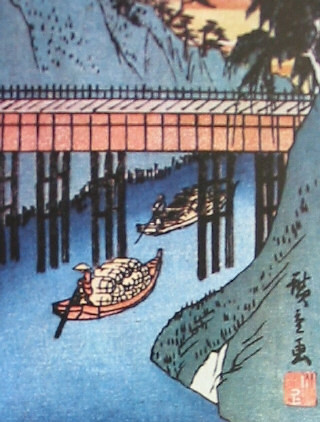Suidobashi is one of the historic bridges in Japan that is still preserved nowadays. Suidobashi bridge crosses the river Kanda in downtown Tokyo; in the past it was used by merchants, travelers, warriors and samurai that followed the Tokaido route (that linked the present cities of Tokyo and Kyoto).
This is how Suidobashi bridge and some areas of downtown Tokyo looked 200 or 300 years ago as represented by ukiyo-e artists:


Kanda river and Suidobashi bridge.

Suidobashi bridge and mount Fuji on the horizon.


And this is how Suidobashi bridge and its surroundings look nowadays:




A roller coaster passing through a building!

Google Maps view. The white thing is Tokyo Dome stadium

